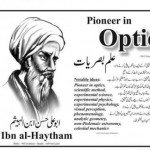- This topic has 10 replies, 4 voices, and was last updated 9 years, 6 months ago by
 Rajguru M. Mohan.
Rajguru M. Mohan.
-
AuthorPosts
-
-
May 1, 2016 at 5:50 am #38698
 Karan AhujaSpectator
Karan AhujaSpectatorhi Can someone please tell me what is the major difference between using an optical amplifier and An EDFA in a system design. Both are optical amplifiers and both are present in the optical folder of the amplifier library of the optisystem. I am confused what is the major difference between two. No doubt the optical amplifier has better performance it gives good results than EDFA but i want to know where does this difference lie.
Is there any difference in the design of these two amplifiers?
I will be looking forward for the replies.
Thank you
Regards -
May 1, 2016 at 10:22 am #38705
 Hamza Ali Abbas KhanParticipant
Hamza Ali Abbas KhanParticipantHi,
Fiber amplifiers used in WDM systems usually make use of control systems as power or gain. Designs Er-doped fiber amplifiers by considering numerical solutions of the rate and the propagation equations under stationary conditions. The model includes amplified spontaneous emission (ASE) as observed in the amplifier Erbium Doped Fiber.
The main difference is related to the amplifier pump scheme selection. You can choose co-propagating, counter-propagating, or bi-directional pump schemes with the option to set wavelength and pump power. Geometrical Er-doped fiber parameters and cross-section curves are required as input files. As output files, you can access gain, output power values, and noise figure determined in the ASE bandwidth set as noise input data.
Enables the design of amplifiers, including EDFAs, that consider pre-defined operational conditions. This means that expected gain, noise figure, and amplifier output power can be previously specified. The amplifier presents the same facilities as a black box model, which enables you to select the operation mode with gain control, power control, or to perform simulations under saturated conditions, as well as define the expected amplifier performance. It is specially suited to perform prompt performance analysis of one or cascaded amplifiers in a long-haul system.Hope this helps.
Thanks-
May 1, 2016 at 10:45 am #38707
 Karan AhujaSpectator
Karan AhujaSpectatorHello Hamza Ali,
Thank you for reply but these are the things from result perspective. What is the major difference in the design?
Regards
-
-
May 1, 2016 at 10:25 am #38706
 Hamza Ali Abbas KhanParticipant
Hamza Ali Abbas KhanParticipantI also want to bring to your notice that In optical fiber library we have different types of amplifier lke Raman amplifier, EDFA amplifier and Semiconductor optical amplifier(SOA).I want to share characteristics of different amplifiers, now the selection of different amplifiers depends upon its application, feasibilty, power pumping availability we have.
Characteristics of SOA types:
Polarization dependent – require polarization maintaining fiber, Relatively high gain ~20 dB , Output saturation power 5-10 dBm, Large BW
Can operate at 800, 1300, and 1500 nm wavelength regions., Compact and easily integrated with other devices, Can be integrated into arrays , High noise figure and cross-talk levels due to nonlinear phenomenon such as 4-, wave mixing. This last feature restricts the use of SOAs. Limited in operation below 10 Gb/s. (Higher rates are possible with lower gain.
Thanks-
May 1, 2016 at 10:48 am #38708
 Karan AhujaSpectator
Karan AhujaSpectatorHi Hamza Ali,
Thank you so much for the concern you are showing but i want to know the difference apart from the performance perspective. I have a doubt in my mind that how it different in design i.e the edfa and the optical amplifier. Since both are in optical amplifier library but why EDFA and optical amplifier than. I have understood that the performance is better in later case but i want to know about the difference in design or for that matter any other significant design parameter.
Thanking you
Regards
-
-
May 1, 2016 at 10:51 am #38709
 Hamza Ali Abbas KhanParticipant
Hamza Ali Abbas KhanParticipantHi Karan ahuja
Here i would like to share advantage and disadvantage of EDFA:
High power transfer efficiency from pump to signal power (> 50%) , Wide spectral band amplification with relative flat gain (>20 dB) – useful for WDM applications, Saturation output > 1 mW (10 to 25 dBm) , Gain-time constant long (>100 msec) to overcome patterning effects and inter-modulation , distortions ( low noise) , Large dynamic range , Low noise figure , Polarization independent and Suitable for long-haul applications.
Disadvantages of EDFAs:
Relatively large devices (km lengths of fiber) – not easily integrated with other
devices , ASE – amplified spontaneous emission. There is always some output even with no signal input due to some excitation of ions in the fiber – spontaneous noise, Cross-talk effects and Gain saturation effects.
I hope this will help
Thanks-
May 1, 2016 at 10:54 am #38710
 Hamza Ali Abbas KhanParticipant
Hamza Ali Abbas KhanParticipanti also want to share Advantages & Disadvantages of FRA
Advantages:
Variable wavelength amplification possible , Compatible with installed SM fiber , Can be used to extend EDFAs , Can result in a lower average power over a span, good for lower crosstalk , Very broadband operation may be possible.
Disadvantages:
High pump power requirements, high pump power lasers have only recently arrived , Sophisticated gain control needed , Noise is also an issue
So, at the end i would like to say that we have different parameters to seek for usage of optical amplifiers Pumping power, desired band of operation, gain, attenuation and its applications.Hope you find it helpful.
Thanks
-
-
May 2, 2016 at 1:24 am #38722
 umer ashraf waniParticipant
umer ashraf waniParticipanthttps://www.google.co.in/url?sa=t&rct=j&q=&esrc=s&source=web&cd=4&cad=rja&uact=8&ved=0ahUKEwjmg5-T07rMAhWWc44KHW8ZCYUQFgg0MAM&url=http%3A%2F%2Fwww.fiber-optic-tutorial.com%2Fcomparison-of-different-optical-amplifiers.html&usg=AFQjCNHBrJgZ-9B5TuvtOKmvzzpZCalqMw&sig2=kdQXr_wULGMTMO2ggPMpZw
https://www.google.co.in/url?sa=t&rct=j&q=&esrc=s&source=web&cd=6&cad=rja&uact=8&ved=0ahUKEwjmg5-T07rMAhWWc44KHW8ZCYUQFghCMAU&url=http%3A%2F%2Fwww2.engr.arizona.edu%2F~ece487%2Fopamp1.pdf&usg=AFQjCNGj5kPktCrTKPXi1WNjY1-zhU5F4Q&sig2=HsBlmEttlDZMf1bves9clA -
May 2, 2016 at 10:18 am #38740
 Rajguru M. MohanParticipant
Rajguru M. MohanParticipantHi Karan Ahuja,
Are you mean Optical Amplifier to SOA (semiconductor optical amplifier) or other.
Although i want to discuss the difference among all others amplifiers to EDFA.
Here is EDFA specifications
• Gain of about 40dB or greater
• Wavelength in the range from 1530 nm to 1560 nm
• Maximum saturation of about 22 dBm
• Noise figure in the order of 5dB
• Pump power of about about 25 dBm
• bandwidth (3dB) – 30 to 60
• Polarization sensitivity not available with EDFA
EDFAs will provide high pump utilization of power and is used along with optical filters to equalize the gain response. There are so many merits of EDFA but as they are not small, they can not be seamlessly integrated with other semiconductor devices in the chain.Thanks,
-
May 2, 2016 at 10:20 am #38741
 Rajguru M. MohanParticipant
Rajguru M. MohanParticipantIn addition to this i share the SOA specifications
• Gain of about 30dB or greater
• Wavelength in the range from 1280 nm to 1650 nm
• Maximum saturation of about 18 dBm
• Noise figure in the order of 8 dB
• Pump power of about less than 400 mA
• bandwidth (3dB) – 60
• Polarization sensitivity available with SOAThe Working Principle Of SOA as:
1.Stimulated emission to amplify an optical signal.
2.Active region of the semiconductor.
3.Injection current to pump electrons at the conduction band.
4.The input signal stimulates the transition of electrons down to the valence band to acquire an amplification. -
May 2, 2016 at 10:21 am #38742
 Rajguru M. MohanParticipant
Rajguru M. MohanParticipantHi,
I want to point out about Disadvantages of SOA
The performance of SOA is still not comparable with the EDFA. The SOA has higher noise, lower gain, moderate polarization dependence and high nonlinearity with fast transient time.
So, we have to use EDFA and this is because of its following advantages:
EDFA has high pump power utilization (>50%)
Directly and simultaneously amplify a wide wavelength band (>80nm) in the 1550nm region, with a relatively flat gain
Flatness can be improved by gain-flattening optical filters
Gain in excess of 50 dB
Low noise figure suitable for long haul applications.Thanks,
-
-
AuthorPosts
- You must be logged in to reply to this topic.

